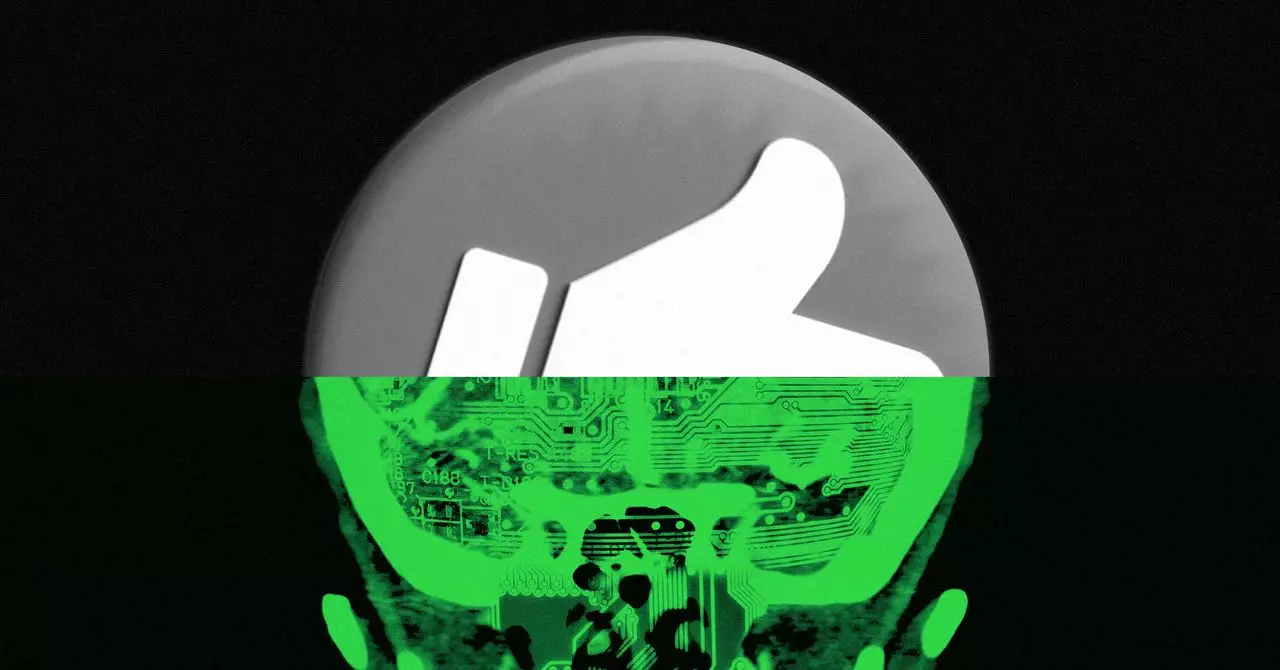The like button has been a fixture of social media platforms for years, serving as an instantaneous gauge of user engagement and sentiment. However, as we move deeper into the age of artificial intelligence (AI), the role of this simple function is evolving in ways that demand reconsideration. Max Levchin, the cofounder of PayPal and CEO of Affirm, has highlighted its potential not just as a means of engagement, but as a crucial dataset for training AI systems. His perspective raises pivotal questions about how we understand human preferences in digital spaces, especially as these preferences become intertwined with sophisticated algorithms that promise to reshape our online experiences.
The Ideal vs. The Actual: Human Judgment in Machine Learning
In machine learning, the “reward function” is a critical component that governs how AI systems operate, providing a pathway for reinforcement learning. However, this pathway can often diverge from what human decision-making would naturally suggest. Levchin emphasizes that AI models, if left unchecked with a purely algorithmic approach, might lead to outcomes that lack the nuanced understanding only human judgment can provide. To bridge this gap, reinforcement learning from human feedback (RLHF) has been introduced to embed a “human thumb” on the scale, refining AI outputs by incorporating human preferences. Yet, the challenge remains: obtaining valid and extensive human preference data is economically taxing and fraught with complexity.
Unlocking the Value of the Like Button
Levchin posits that the wealth of liking data, currently monopolized by platforms like Facebook, could be a game-changer for AI developers. The staggering volume of preference data generated by likes represents a significant resource for training algorithms that align more closely with human intuitions. He contends that this “mountain of liking data” is one of the internet’s most valuable assets—a claim that shimmers with truth. As AI becomes increasingly sophisticated, the ability to draw insights from past user interactions could lead to models that reflect genuine human preferences, rather than projections based solely on statistical averages.
However, we must scrutinize the implications—what happens if this data source becomes a behemoth, potentially monopolizing human influence in algorithmic decision-making? The dependency on platforms like Facebook to provide data for training purposes could elevate these companies to unprecedented levels of power over online interactions.
The Irony of AI Prediction and the Future Need for Likes
As the dialogue around the like button and its future unfolds, an interesting paradox arises: while the like button may be invaluable for training AI on human preference, AI is concurrently evolving the paradigms in which those preferences are formed. Algorithms now engage in predictive modeling, scrutinizing user behavior to forecast what a person is likely to enjoy, possibly making the like button less relevant in the long term. Facebook’s experiments with AI-enhanced algorithms for recommending content, for instance, point to a future where the algorithm could anticipate user desires with impressive precision.
Yet, are we prepared to forgo the simplicity and immediacy that a like button provides? YouTube cofounder Steve Chen raises a compelling point—understanding shifts in user preferences due to life events or personal circumstances still relies on explicit feedback mechanisms. The like button serves that function beautifully, allowing users to provide nuanced feedback reflecting ever-changing interests and needs.
An Advertising Perspective: The Like Button’s Sustained Relevance
Beyond user experience, the like button plays a pivotal role for advertisers who are keen to connect with audiences. This connection forms a triad among viewers, content creators, and marketers, with the like serving as a straightforward metric for engagement. The simplicity of clicking a button sends a clear signal, bridging the gap between consumer behavior and marketing strategies. Advertisers thrive on these tangible expressions of engagement, using them to refine their approaches and target audiences more effectively.
However, it’s equally important to recognize that as algorithms advance, the invisible intricacies of user engagement will inevitably alter advertising dynamics. If AI can predict preferences with pinpoint accuracy, will a mere like transform into an outdated concept, encumbered by the rapid evolution of digital interactions? Or could it simultaneously become an integral part of a more complex, intertwined feedback loop?
Redefining Engagement: The Road Ahead
The future of the like button is tethered tightly not just to the technological evolution of AI but also to the human desire for connection and expression in a digital landscape. As platforms like Facebook wield extensive data from our likes, it’s essential to approach this reality with a critical lens. The question isn’t merely whether the like button will fade away but rather how its role will adapt and question the human experiences, preferences, and values it represents in the age of artificial intelligence. The onus lies on technologists, marketers, and society at large to ensure that as we march forward, our digital expressions remain authentic reflections of our values and needs.

